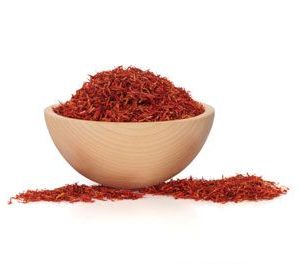Whether it’s fresh or dried, oregano is one of the foundations of Italian cuisine, probably because of its ability to draw out the flavor of tomato-based dishes and any other ingredient it’s blended with. It’s also a close relative of marjoram, with oregano even being called “wild marjoram” in the Mediterranean. But unlike marjoram, which has a sweeter flavor, oregano has a stronger taste and pungent aroma.
Oregano is a perennial plant typically found in the Mediterranean region or Euro/Irano-Siberian regions, but it is also now cultivated around the world for its pharmacological properties. Oregano is also a low-maintenance plant, so you can easily grow it either indoors or outdoors to obtain the health benefits it offers at any time.
Most Mediterranean dishes that include elements such as tomato, zucchini, beef, or lamb are all enhanced with a few teaspoons of oregano added for delicious complexity and flavor. As for its medicinal applications, oregano has been used for respiratory and gastrointestinal conditions. In Chinese medicine, oregano is used for heat stroke, fever and vomiting.
Health Benefits of Oregano
The 1-ounce oregano amount shown in the nutritional profile below is an indication of the nutrient ratio you’d get in a smaller serving of this herb, such as a teaspoon mixed in your favorite soup. Oregano contains a handful of important nutrients that facilitate numerous biological processes. It contains high amounts of folate, which is crucial for fetal development and lowering the risk of neural birth defects; vitamin A, for maintaining both skin and eye health; magnesium, for muscle contraction and blood pressure; and potassium, for optimizing heart health.
Listed at 175,925 for oxygen radical absorbance capacity or ORAC value, oregano has one of the highest antioxidant activity ratings, which is excellent for neutralizing free radicals. To give you an idea of its full impact, oregano packs more than 50 times the antioxidant punch of apples, which has an ORAC value of only 3,049. Flavonoids found in oregano include luteolin, salvagenin, cirsimaritin and apigenin.
The oil extracted from oregano leaves is widely popular for its anti-inflammatory, immunomodulatory and anticancer properties. This is primarily thanks to the compounds found in the essential oil, namely carvacrol and thymol, which have antibacterial and fungus-fighting activities, as well as o-cymene, linalool and caryophyllene.
| Oregano Nutrition Facts
Serving Size: 1 teaspoon (1 gram), leaves, dried |
||
| Amt. Per Serving |
||
| Calories | 2.65 kcal | |
| Total Fat | 0.043 g | |
| Saturated Fat | 0.016 g | |
| Trans Fat | 0 g | |
| Cholesterol | 0 mg | |
| Sodium | 0.25 mg | |
| Total Carbohydrates | 1 g | |
| Dietary Fiber | 0.689 g | |
| Sugar | 0.041 g | |
| Protein | 0.09 g | |
| Vitamin A17 IU | Vitamin C | 0.023 mg |
| Calcium16 mg | Iron | 12.6 mg |
Studies Done on Oregano
A 2009 study from Nutrition and Cancer was undertaken to investigate whether origanum vulgare, widely used in the Mediterranean diet and already associated with a low risk for colon cancer, might have some effect on cancer prevention. Oregano extract was found to lead to an arrest in growth and the death of colon cancer cells, possibly because changes in glutathione content reduced oxidation.
Certain parts of the Mediterranean diet have been associated with a decreased cardiovascular and diabetes risk. In a 2011 study published in Cancer Letters, an inverse relationship was observed between Mediterranean herbs, including oregano, and lung cancer (although reported lifestyle choices also lowered the risk for several cancers).
In evaluating which herbal phytonutrients were responsible, the naturally occurring polyphenol carnosol was identified as having anticancer properties in prostate, breast, skin, leukemia and colon cancers. Carnosol also exercised selective toxicity toward cancer cells versus benign tumor cells.
Oregano Fun Facts
Since methane is 28 times more powerful in warming the Earth than carbon dioxide, and cattle produce about 11% of the total national greenhouse emissions, scientists have been trying to figure out how to reduce methane emissions from livestock. Vaccines, breeding and antibiotics were tried, but to no avail.
After six years of concentrating on the conundrum, an assistant professor of dairy nutrition at Penn State found oregano to be the most effective methane suppressant. Using oregano even increased milk production.
Summary
When determining what nutritional advantages oregano might offer, an easier question might be what it doesn’t offer, because the list of benefits is quite long.
Folate, vitamin A, magnesium, potassium, carvacrol and thymol are all found in oregano. Its antioxidant power and proven disease prevention is incredible. This fragrant Mediterranean herb may help optimize immune function, fight bacteria and support various body systems.
Antiseptic and anti-inflammatory qualities are released in the oil, which also contains germ- and bacteria-battling agents. So there are more than a few reasons why the Greeks called oregano the “joy of the mountains.”







Reviews
There are no reviews yet.